by Kazeem Olalekan MRPharmS
In June of this year we highlighted the new tool produced by the Tomorrow’s Pharmacist team called ONtrack (1) developed to help pre-registration pharmacist trainees revise for their pre-registration exam. Well guess what? Bookapharmacist.com had an exclusive preview of the online tool and I was asked to test drive the tool. Well these are my findings:
First Impression
My first impression is that this is a great tool to introduce and represents a degree of innovation from my professional body. It should fill a useful gap in the pre-registration training programme of pharmacists. It was a tool I would have found useful whilst I was training my pre-registration pharmacist (2). With over 85.4% of pre-registration pharmacists passing the exam this year compared to 86.9% last year, this tool might become useful in enhancing the pass rate next year (3). That will of course require pre-registration pharmacists deliberately engaging with the tool.
The website is well designed with easy navigation to key contents and clear instructions (figure 1)
Figure 1
Putting myself to the test
There are three components to the pre-registration exam: Closed Book (70% clinical and 30% other), Open Book (50% clinical, 30% Medicines Ethics and Practice, 20% Drug Tariff) and Calculations. So I decided to put myself to the test (Figure 2)
Figure 2
I went for the default 20 question test. There is the option of between 10 and 50 questions. These question are updated regularly to make them relevant. All the questions are as they are in the real exam. Some questions include two statements and you have to choose any of the 4 options (Figure 3). The system also alerts you to the number of questions remaining.
Figure 3
At end of the closed paper, I get a review of all the questions I have answered (Figure 4). This is a useful learning tool. I also get a session summary (what time I started and when I finished). I will have to admit that I was attempting these question whilst looking after my baby son. Not strict exam conditions them! I scored 16 out of 20 (with 93% of clinical questions correct and just 50% of other question correct). I am not too surprised. I am a clinician and some intricate legal details in the MEP let me down. It is worth noting that the MEP has been revamped for the modern pharmacy practice. It is now free from the shackles of the Society’s former regulatory role. (4)
Figure 4
I attempted the open paper without consulting any reference sources. Well, I paid the price for that. I answered 11 out of 20 questions correctly (60% clinical, 33% MEP, and 75% Drug Tariff). I am not sure if that is a sufficient enough pass mark; then again I should have consulted the reference sources allowed (Figure 5).
Figure 5
Finally, I attempted all the calculations. I was very pleased with this part of the question sets because most students I know find this quite challenging. There are loads of calculation for paediatric patients which is an area close to my heart. I would have been surprised if I had scored less than 20 out of 20 (Figure 6).
Figure 6
You can also review all your sessions in one page (Figure 7)
Figure 7
Reflection
This is a very useful tool which I feel is a must for all pre-registration pharmacists. Even people with very little knowledge of computers should find it easy to navigate.
On a personal note, I think I should dust down the new copy of the MEP and read it cover to cover. I should also revisit areas I didn’t do quite well in. I am re-assured that my calculation is sound.
Thanks to Tomorrow’s Pharmacist team for the opportunity to test drive your system.







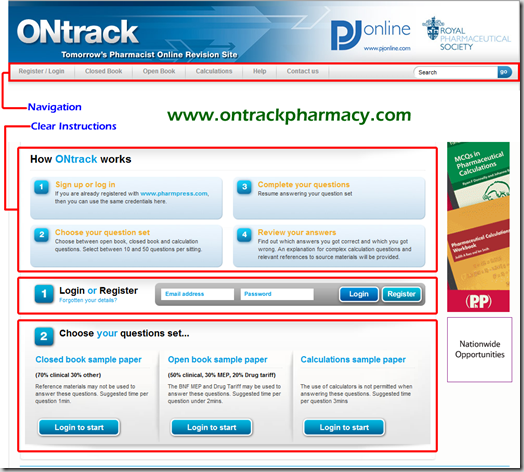
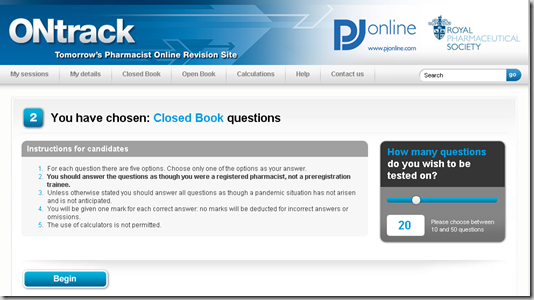
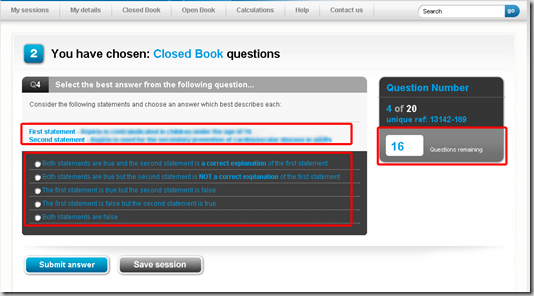
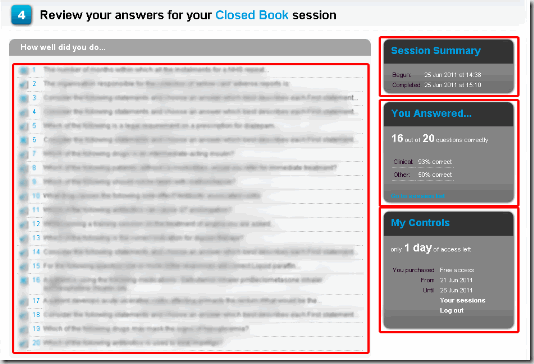
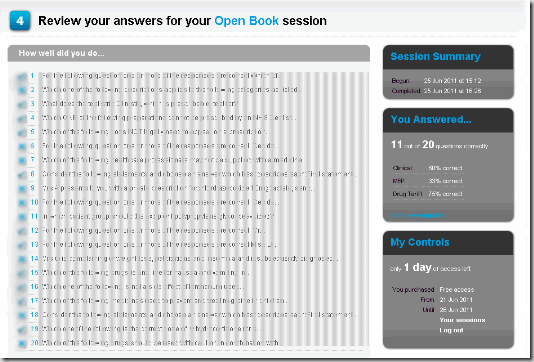
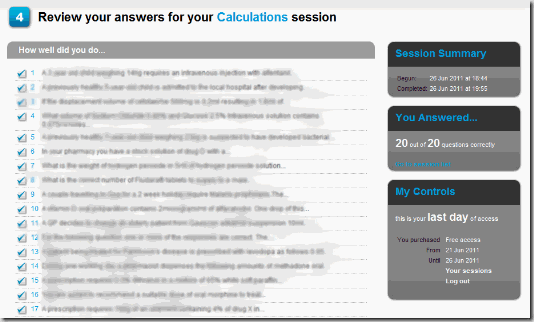
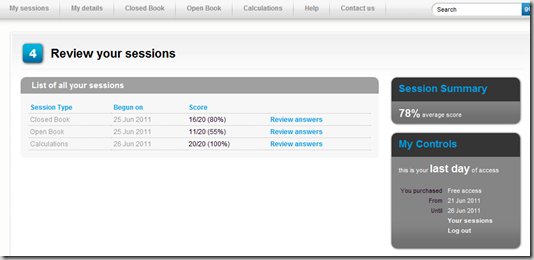
Leave a Reply